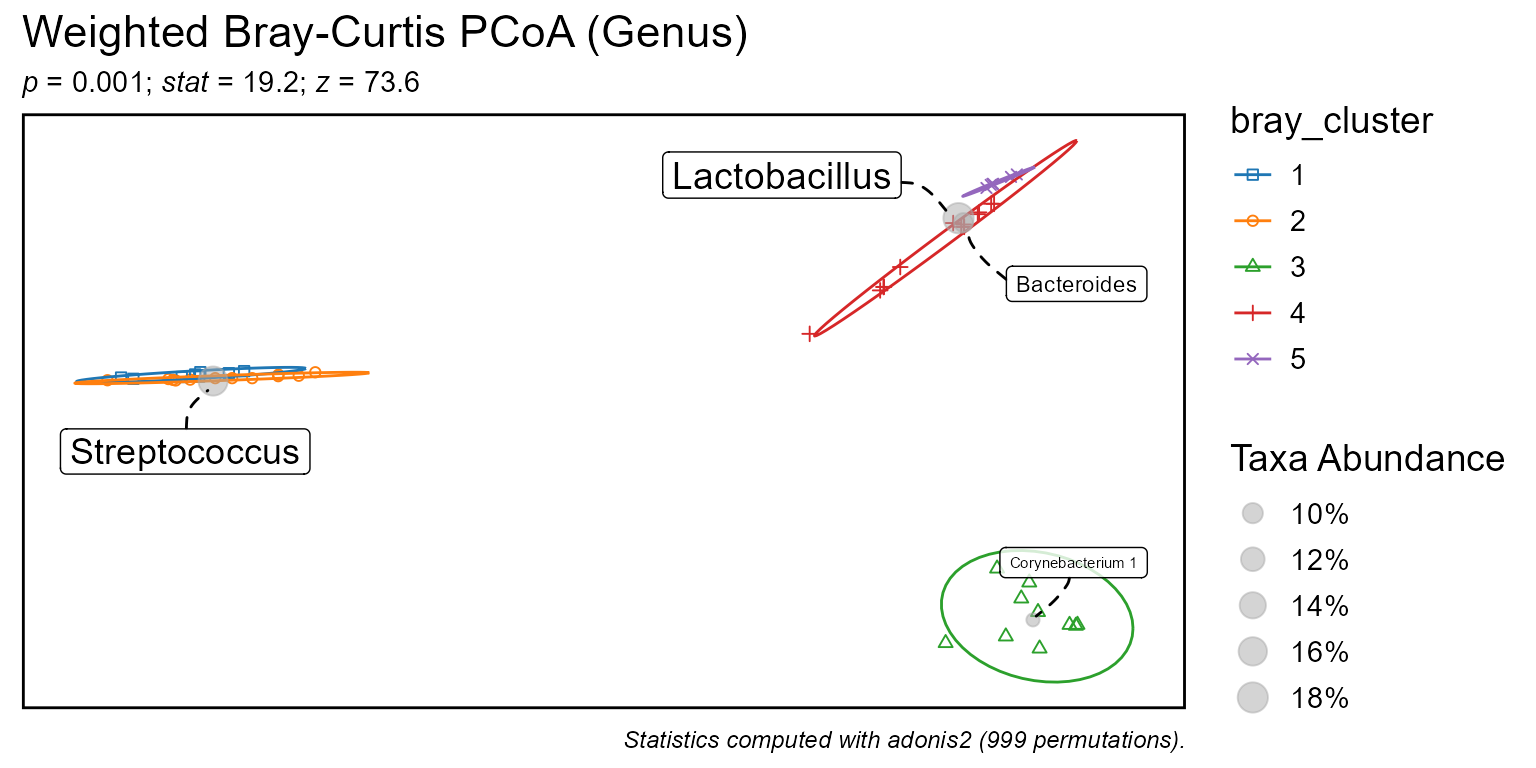Cluster samples by beta diversity k-means.
Usage
bdiv_clusters(
biom,
bdiv = "Bray-Curtis",
weighted = TRUE,
normalized = TRUE,
tree = NULL,
k = 5,
...
)Arguments
- biom
An rbiom object, such as from
as_rbiom(). Any value accepted byas_rbiom()can also be given here.- bdiv
Beta diversity distance algorithm(s) to use. Options are:
"Bray-Curtis","Manhattan","Euclidean","Jaccard", and"UniFrac". For"UniFrac", a phylogenetic tree must be present inbiomor explicitly provided viatree=. Multiple/abbreviated values allowed. Default:"Bray-Curtis"- weighted
Take relative abundances into account. When
weighted=FALSE, only presence/absence is considered. Multiple values allowed. Default:TRUE- normalized
Only changes the "Weighted UniFrac" calculation. Divides result by the total branch weights. Default:
TRUE- tree
A
phyloobject representing the phylogenetic relationships of the taxa inbiom. Only required when computing UniFrac distances. Default:biom$tree- k
Number of clusters. Default:
5L- ...
Passed on to
stats::kmeans().
See also
Other beta_diversity:
bdiv_boxplot(),
bdiv_corrplot(),
bdiv_heatmap(),
bdiv_ord_plot(),
bdiv_ord_table(),
bdiv_stats(),
bdiv_table(),
distmat_stats()
Other clustering:
taxa_clusters()
Examples
library(rbiom)
biom <- rarefy(hmp50)
biom$metadata$bray_cluster <- bdiv_clusters(biom)
pull(biom, 'bray_cluster')[1:10]
#> HMP01 HMP02 HMP03 HMP04 HMP05 HMP06 HMP07 HMP08 HMP09 HMP10
#> 1 1 1 1 1 1 1 1 1 2
#> Levels: 1 2 3 4 5
bdiv_ord_plot(biom, stat.by = "bray_cluster")
#> Too few points to calculate an ellipse
#> Warning: Removed 1 row containing missing values or values outside the scale range
#> (`geom_path()`).

